React Request Forms
Clean, interactive React request forms for fast and smooth submission experiences.
-
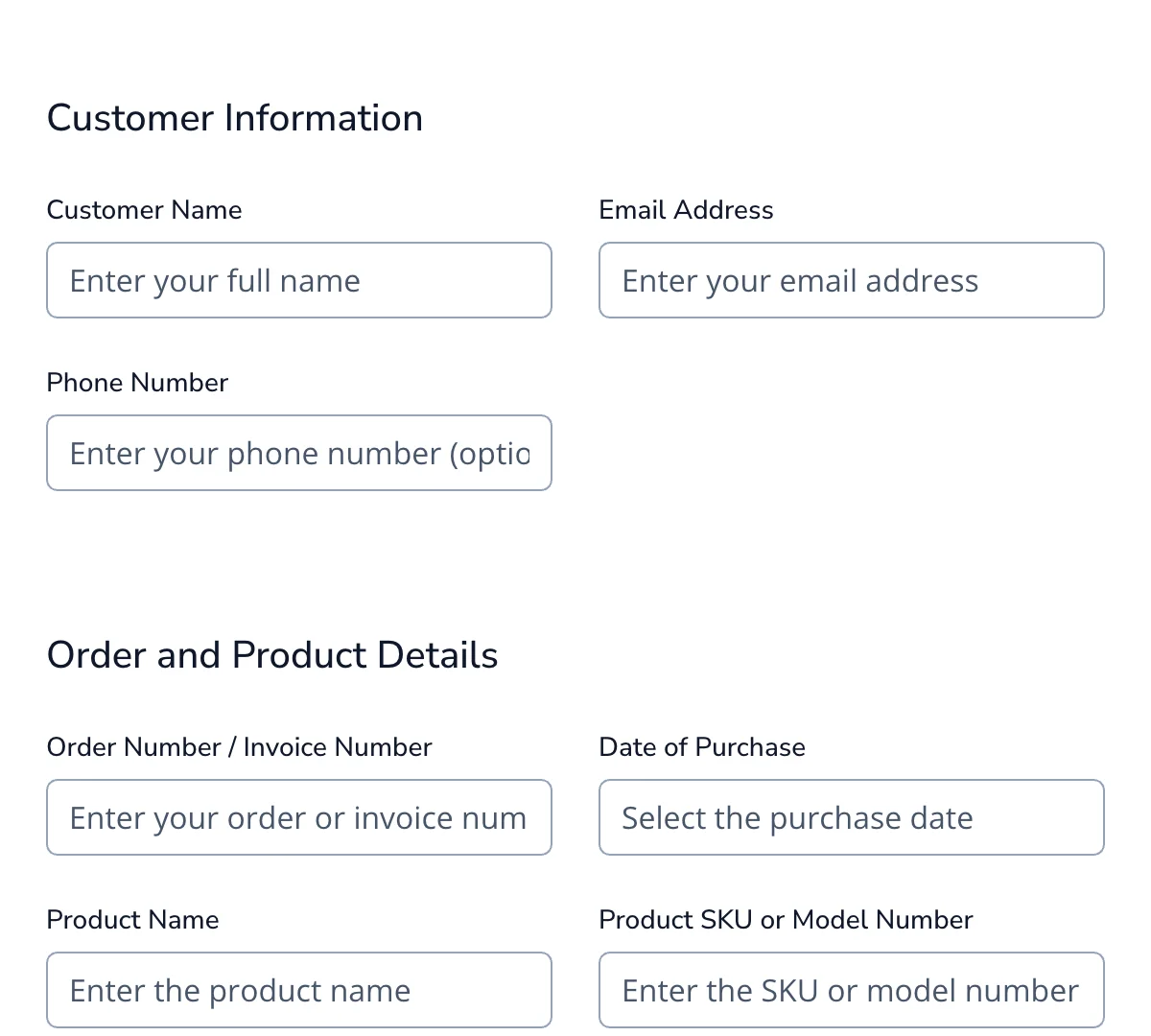
RMA form
Clean, efficient RMA form for smooth product returns and processing.
Get code -
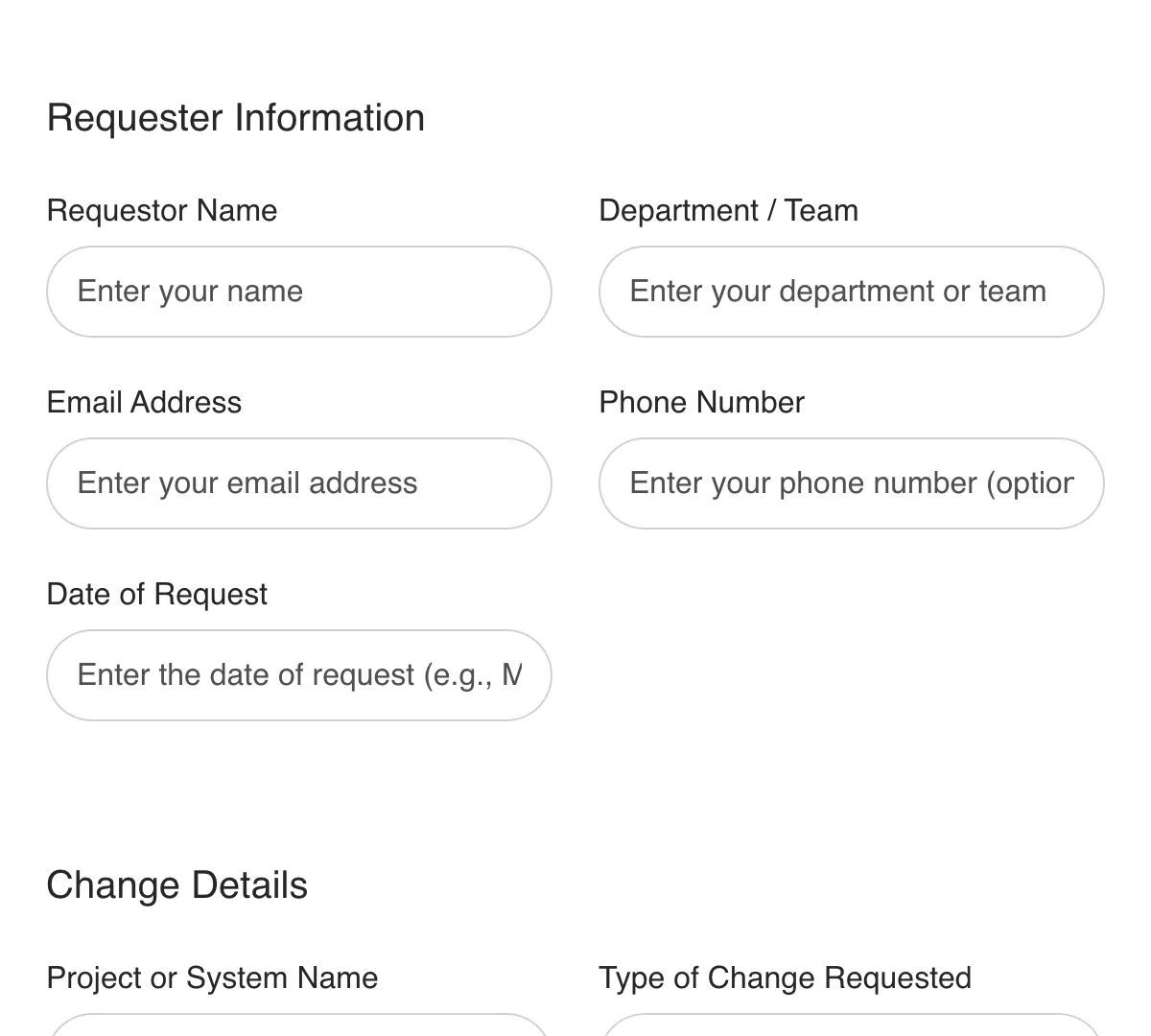
Change Request Form
Clean, easy-to-manage change request form for smooth project updates and tracking.
Get code -
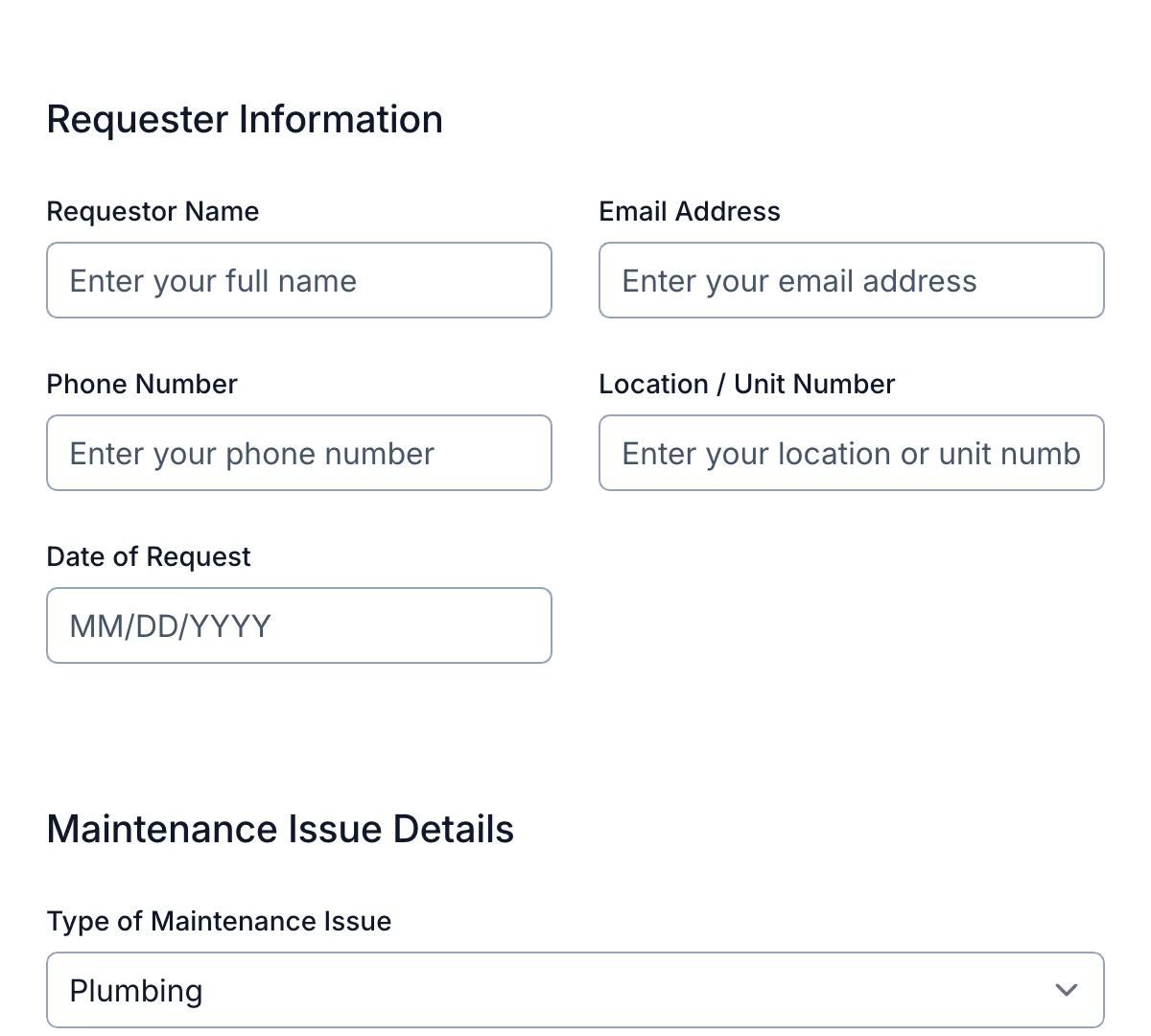
Maintenance Request Form
Clean, user-friendly maintenance request form for quick repair tracking and response.
Get code -
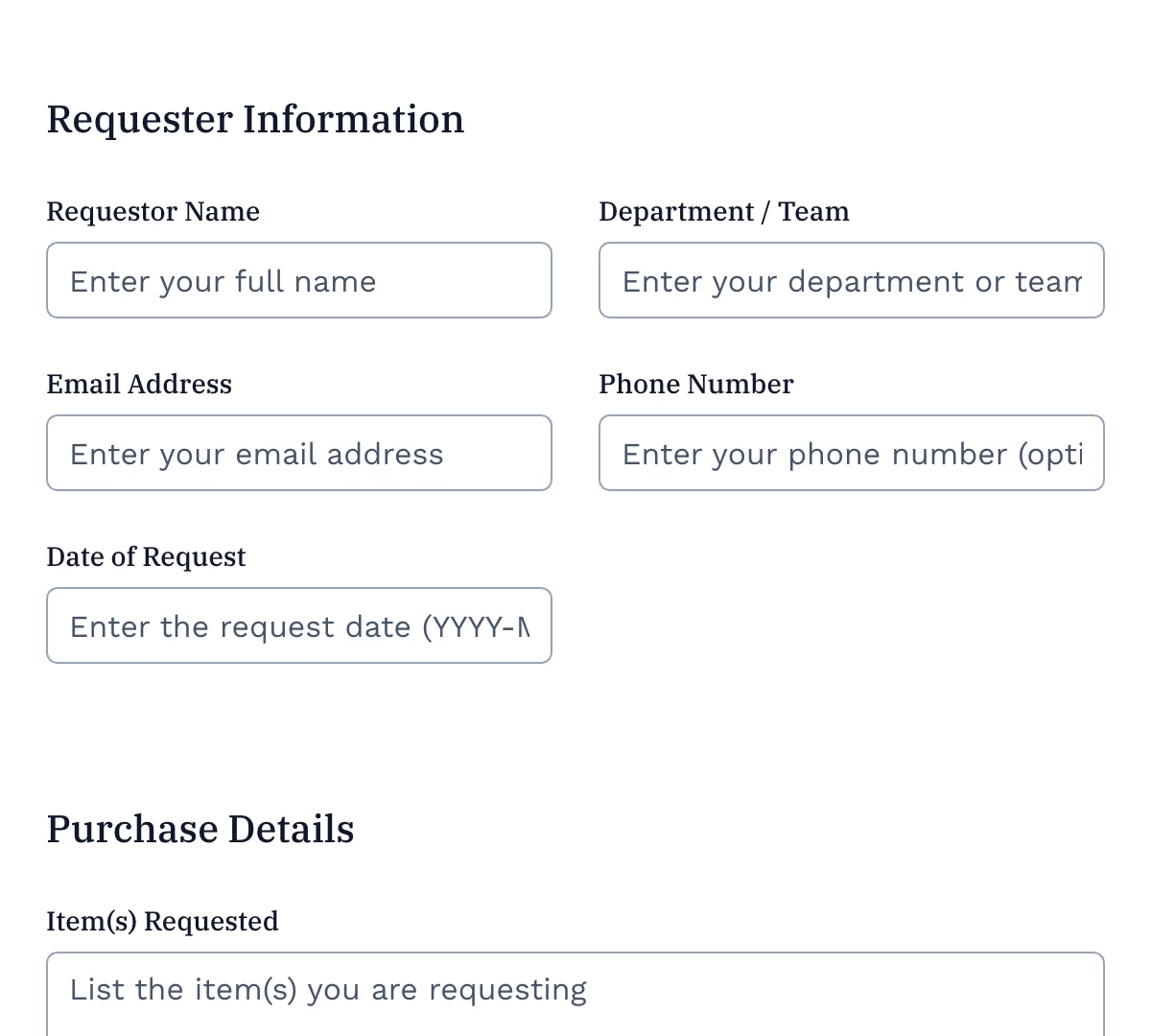
Purchase Request Form
Clean, organized purchase request form for streamlined internal procurement processes.
Get code -
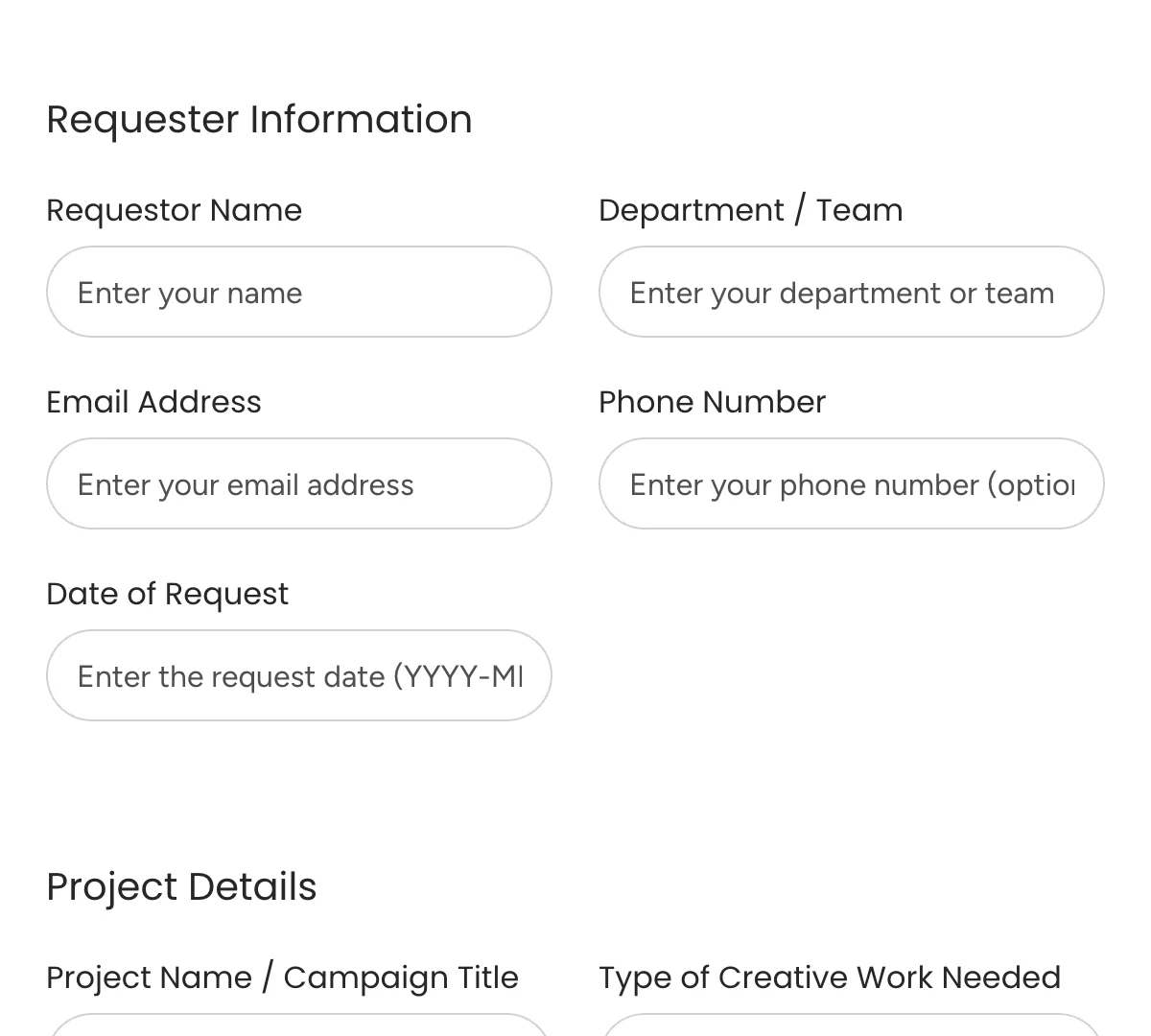
Creative Request Form
Clean, structured creative request form for easy creative project intake and management.
Get code -
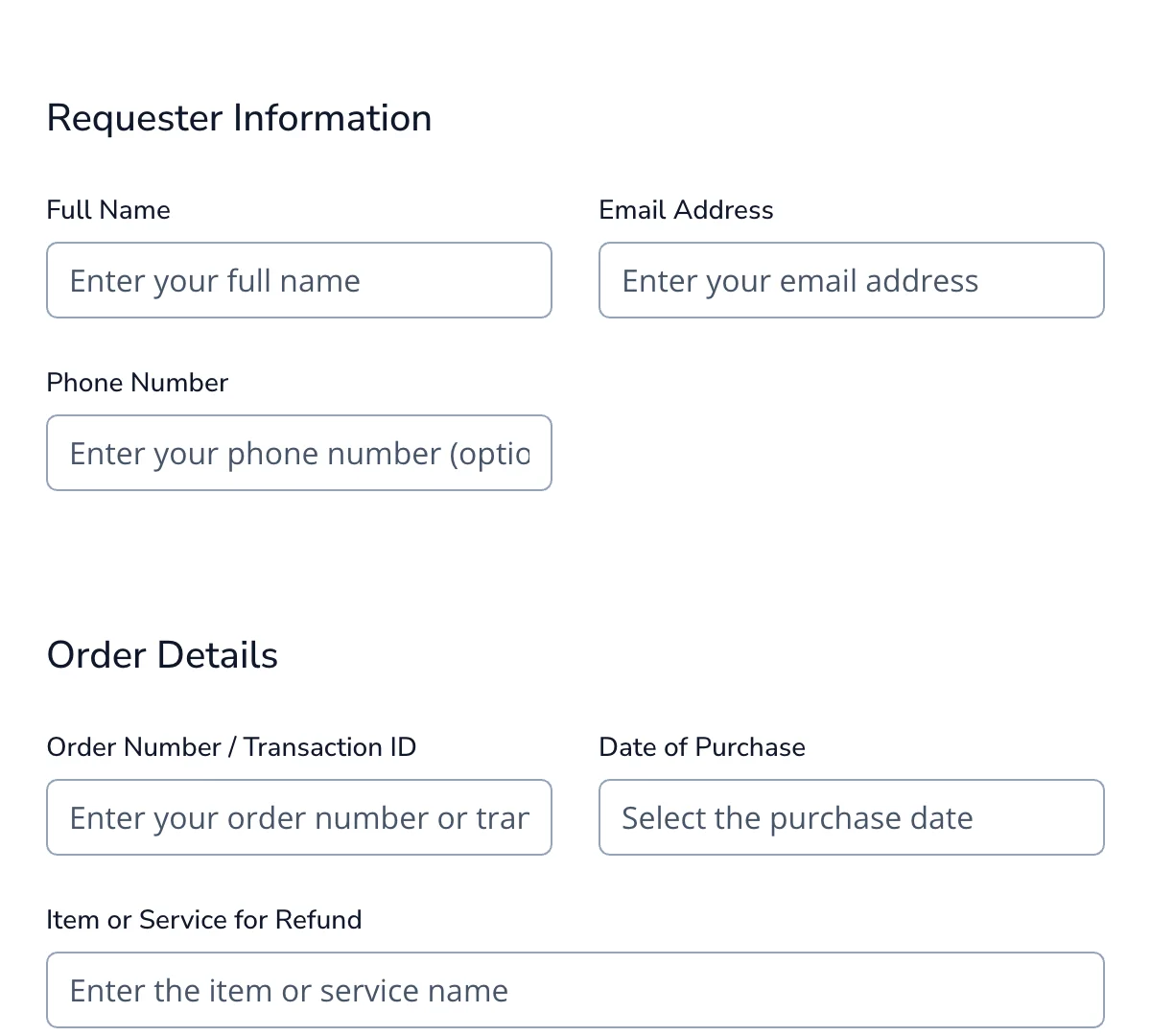
Refund Request Form
Clean, straightforward refund request form for faster and more organized refund management.
Get code -
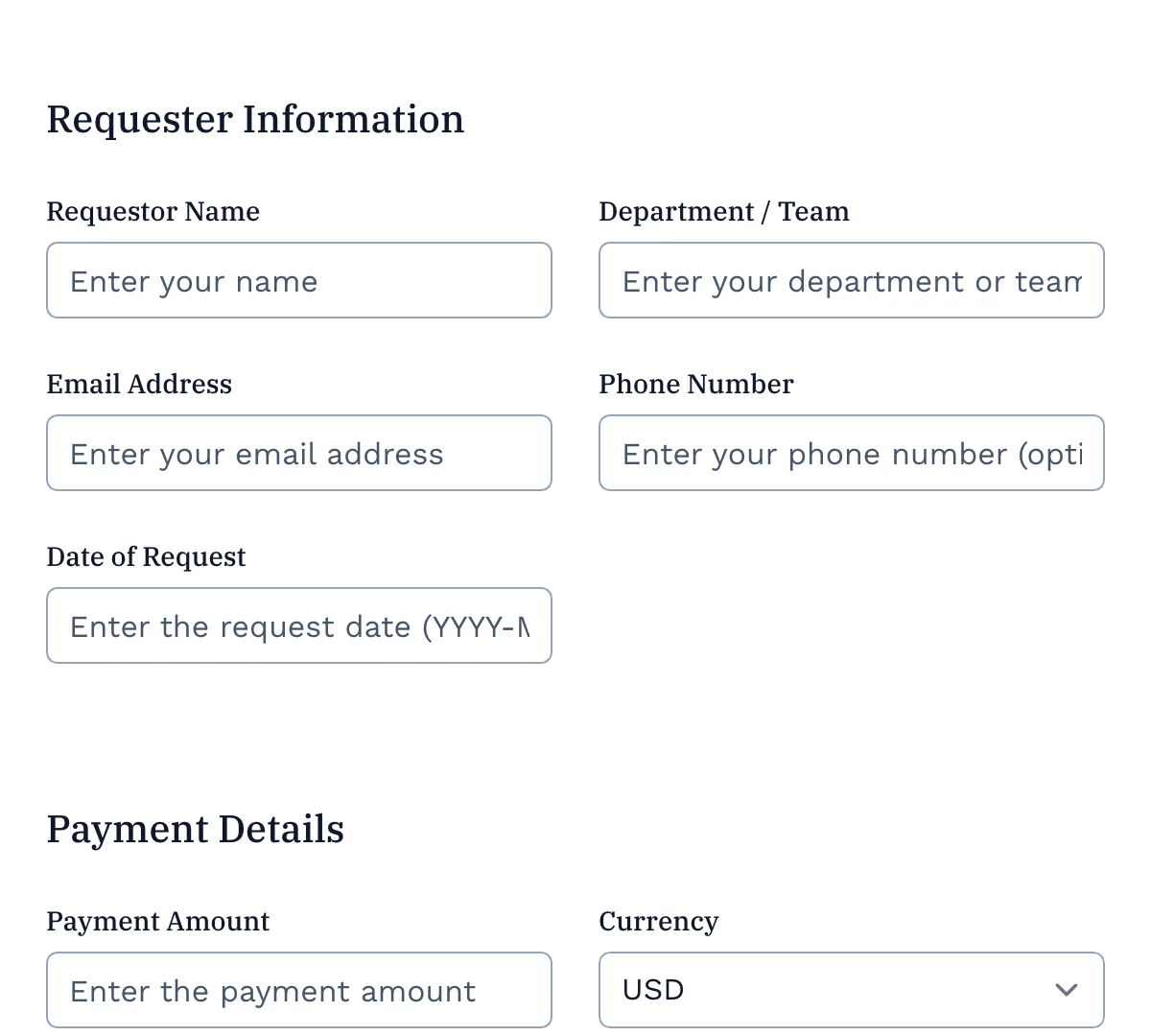
Payment Request Form
Clean, professional payment request form for easy billing and payment tracking.
Get code -
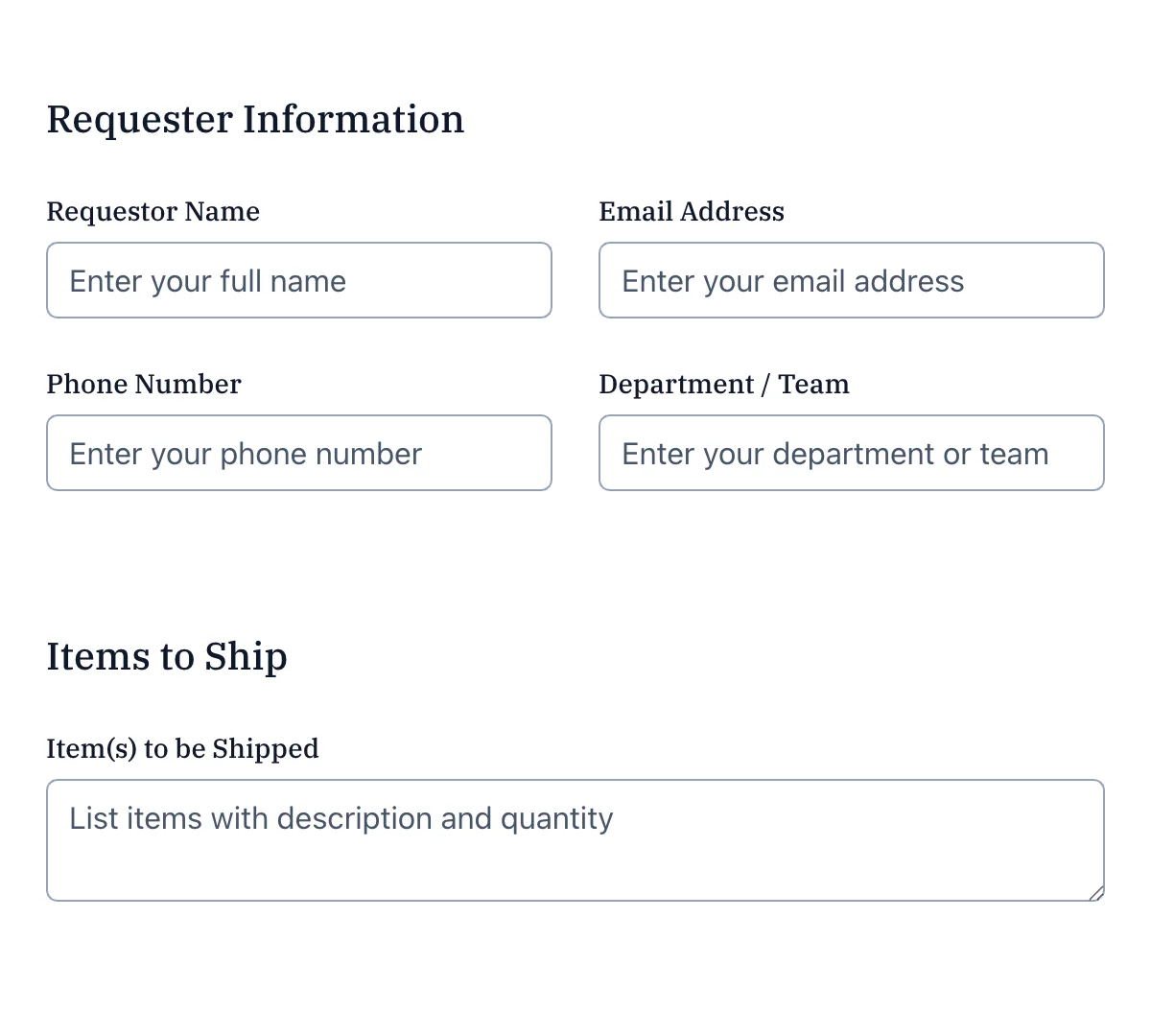
Shipping Request Form
Clean, organized shipping request form for seamless order fulfillment and logistics.
Get code -
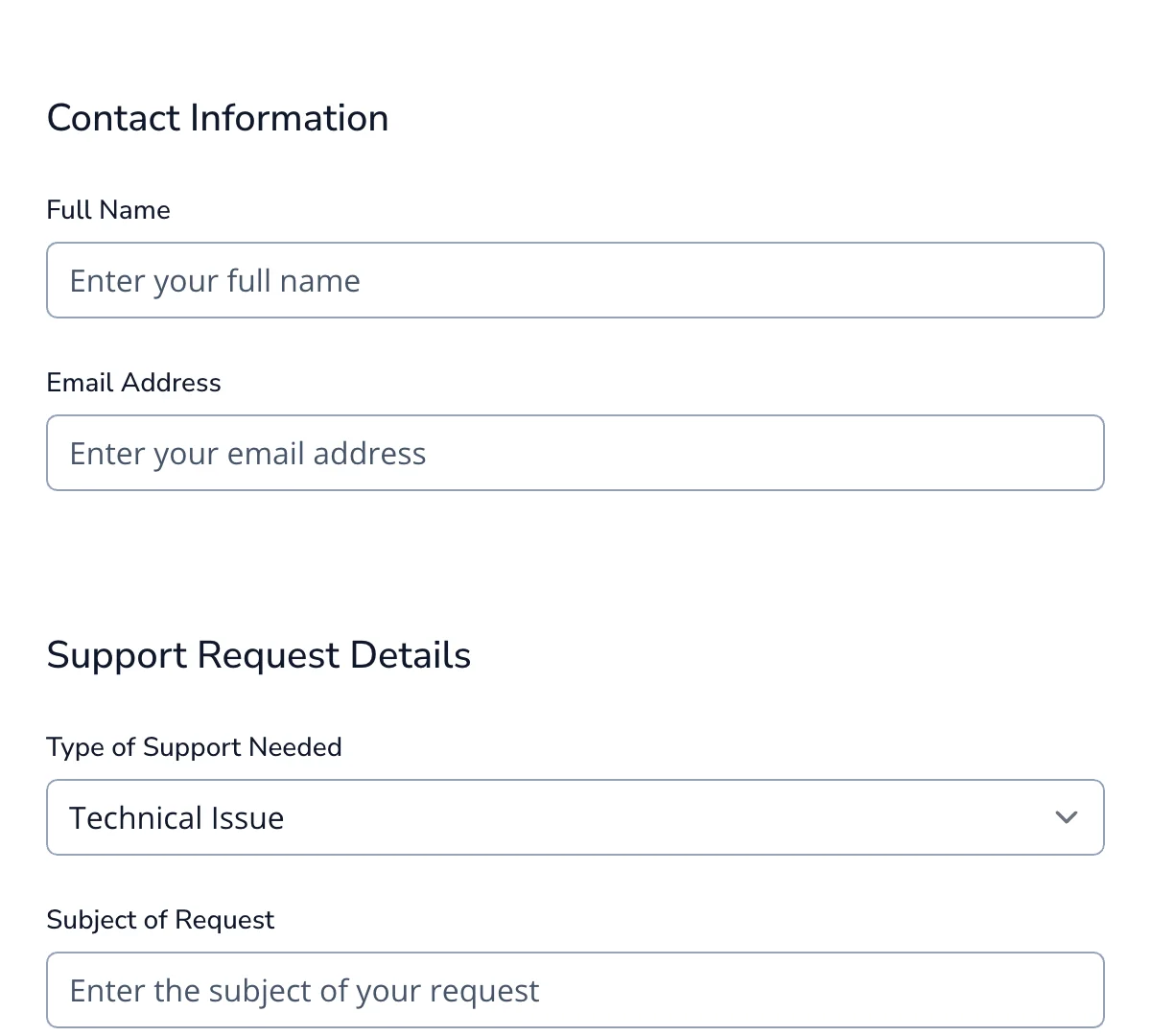
Support Request Form
Clean, easy-to-use support request form for faster customer service and troubleshooting.
Get code
What is a React Request Form?
Creating responsive, dynamic forms is essential for building engaging applications. A React request form is a form built using the React JavaScript library, enabling developers to efficiently manage user inputs, validation, and form submission within a React-based web application.
Unlike static HTML request forms, a React request form leverages React’s component-based architecture to handle form state, validation, and submission flows dynamically. Whether you’re building a contact form, a maintenance request form, a purchase request form, or a support form, using React helps streamline the process, improve user experience, and maintain cleaner codebases.
React request forms are commonly used across many industries and applications where collecting structured user input is critical; whether for internal operations, customer support, service requests, or sales inquiries. Combined with powerful backends like Formspree’s submission handling, React makes it simple to build fast, interactive, and reliable request forms.
Why Use a React Request Form?
A React request form offers several clear advantages over traditional static forms. Here’s why many developers prefer building request forms with React:
Dynamic Form State Management
React uses a concept called “state” to manage the form’s data in real-time. Each keystroke or input change automatically updates the component’s state, making it easy to handle form data dynamically without needing to manually manipulate the DOM.
This is particularly important for more complex request forms, like multi-step maintenance forms or conditional support request forms where fields may appear or disappear based on previous answers.
Easy Validation and Error Handling
With React, you can validate form fields as users type or on form submission. Immediate feedback, such as flagging missing fields or invalid email formats, creates a smoother and more professional user experience.
React’s structure makes it straightforward to:
- Set required fields
- Display error messages
- Handle custom validation rules
- Prevent form submission until the form is valid
Component Reusability
In React, a form can be broken down into reusable components. You can create a single InputField component and reuse it across multiple request forms: contact forms, purchase forms, maintenance forms, and more. This drastically reduces redundancy and simplifies maintenance as your project grows.
Better User Experience with Conditional Logic
Using React’s conditional rendering, you can easily show or hide fields based on user choices. For example, if a user selects “Equipment Repair” on a maintenance request form, additional fields for asset ID and problem description can dynamically appear.
This behavior makes React request forms more intuitive and user-friendly compared to traditional static forms.
Seamless Integration With APIs and Backends
React makes it easy to send form submissions directly to APIs or services like Formspree’s backend. Using fetch or axios, you can handle form submission asynchronously, show pending states, handle errors gracefully, and redirect or confirm submissions—all inside your React app.
In short, React request forms are more powerful, flexible, and maintainable than traditional HTML forms, making them ideal for modern websites and web applications.
Best Practices for Registration Forms
Building an effective React request form goes beyond simply collecting data. Here are some best practices to ensure your forms are robust, user-friendly, and scalable:
Use Controlled Components
In React, a controlled component is an input form element whose value is controlled by the React state. This approach provides clear control over form inputs and makes it easier to implement validation, error messages, and dynamic behavior.
Example of a controlled input:
function RequestForm() {
const [name, setName] = React.useState('');
return (
<form>
<label>Name:</label>
<input
type="text"
value={name}
onChange={(e) => setName(e.target.value)}
required
/>
</form>
);
}
All modern React request forms should use controlled components for consistency and better form management.
Implement Real-Time Validation
Providing users with instant feedback is crucial. Validate fields like email addresses, phone numbers, and required fields as the user fills out the form—not just when they hit submit.
For instance:
- Show a green checkmark when an email is valid.
- Display a warning if a required field is left empty.
- Guide users with helpful placeholder text or tooltips.
Real-time validation improves user satisfaction and reduces frustration when filling out request forms.
Handle Errors Gracefully
Always account for network errors or submission failures. If the form cannot submit for any reason (server timeout, validation error, etc.), display a clear, friendly error message rather than leaving the user wondering what happened.
You should:
- Highlight problematic fields.
- Allow users to retry submission.
- Log errors internally if needed.
Handling errors properly is a mark of a professional-grade React request form.
Use Loading and Pending States
When users submit a form, always indicate that something is happening. For instance, disable the submit button and show a loading spinner until the request is completed.
const [loading, setLoading] = React.useState(false);
<button disabled={loading}>
{loading ? 'Submitting...' : 'Submit'}
</button>
This simple UX enhancement reassures users that their request is being processed.
Keep Forms Accessible
Accessibility should be a top priority for any React request form. Make sure your forms are usable by everyone by:
- Associating labels correctly with input fields.
- Enabling keyboard navigation.
- Using ARIA attributes where necessary.
- Providing focus indicators for inputs.
An accessible form helps more users complete their request forms successfully.
Break Long Forms Into Steps
If your form is very long (e.g., equipment maintenance requests or multi-department service requests), break it into logical steps rather than overwhelming users with dozens of fields at once.
Multi-step forms are easier to navigate and feel less intimidating. In React, you can manage the current step using state and conditionally render the appropriate fields for that step.
Optimize for Mobile Devices
More users now submit forms from smartphones than desktops. Ensure that your React request form:
- Is responsive and mobile-friendly.
- Uses larger touch targets for buttons.
- Avoids tiny form fields that are hard to fill on small screens.
Optimizing mobile usability leads to higher submission rates for your request forms.
Conclusion
A React request form is a powerful tool that allows you to collect user input dynamically, validate data efficiently, and provide a smooth, professional user experience. Whether you’re gathering customer inquiries, support requests, maintenance issues, or purchase orders, building your request forms in React ensures flexibility, scalability, and ease of management.
By following best practices—such as using controlled components, adding real-time validation, managing error and loading states, and optimizing for accessibility and mobile—you can create robust, high-performing React request forms that delight users and streamline operations.
With Formspree’s backend handling submissions, notifications, and form management, integrating a React request form into your application becomes easier and faster than ever. Take your website’s interactivity to the next level today by building a modern React-powered request form—and turn casual visitors into active, engaged users.